Minjeong Kim
Edge-boosted graph learning for functional brain connectivity analysis
Apr 21, 2025Abstract:Predicting disease states from functional brain connectivity is critical for the early diagnosis of severe neurodegenerative diseases such as Alzheimer's Disease and Parkinson's Disease. Existing studies commonly employ Graph Neural Networks (GNNs) to infer clinical diagnoses from node-based brain connectivity matrices generated through node-to-node similarities of regionally averaged fMRI signals. However, recent neuroscience studies found that such node-based connectivity does not accurately capture ``functional connections" within the brain. This paper proposes a novel approach to brain network analysis that emphasizes edge functional connectivity (eFC), shifting the focus to inter-edge relationships. Additionally, we introduce a co-embedding technique to integrate edge functional connections effectively. Experimental results on the ADNI and PPMI datasets demonstrate that our method significantly outperforms state-of-the-art GNN methods in classifying functional brain networks.
Learning Covariance-Based Multi-Scale Representation of Neuroimaging Measures for Alzheimer Classification
Mar 03, 2025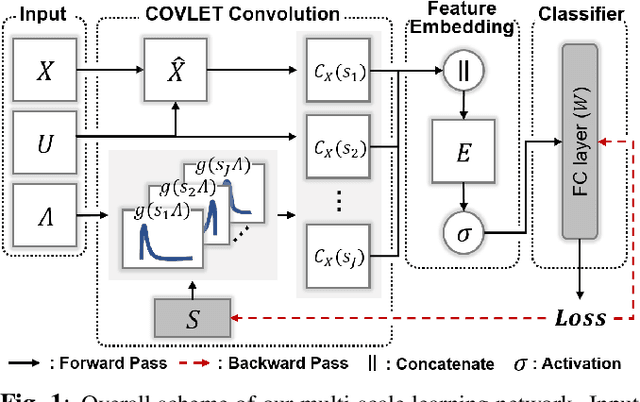


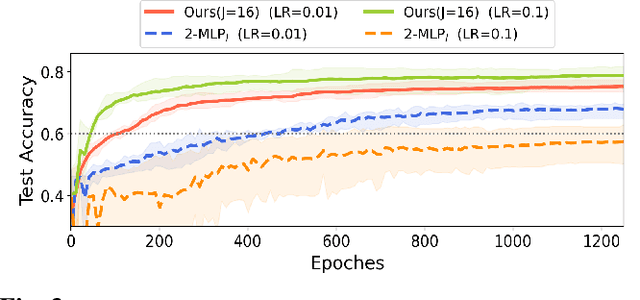
Abstract:Stacking excessive layers in DNN results in highly underdetermined system when training samples are limited, which is very common in medical applications. In this regard, we present a framework capable of deriving an efficient high-dimensional space with reasonable increase in model size. This is done by utilizing a transform (i.e., convolution) that leverages scale-space theory with covariance structure. The overall model trains on this transform together with a downstream classifier (i.e., Fully Connected layer) to capture the optimal multi-scale representation of the original data which corresponds to task-specific components in a dual space. Experiments on neuroimaging measures from Alzheimer's Disease Neuroimaging Initiative (ADNI) study show that our model performs better and converges faster than conventional models even when the model size is significantly reduced. The trained model is made interpretable using gradient information over the multi-scale transform to delineate personalized AD-specific regions in the brain.
Modality-Agnostic Style Transfer for Holistic Feature Imputation
Mar 03, 2025


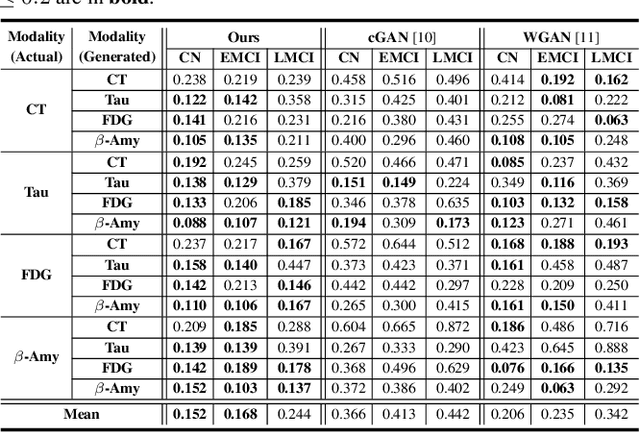
Abstract:Characterizing a preclinical stage of Alzheimer's Disease (AD) via single imaging is difficult as its early symptoms are quite subtle. Therefore, many neuroimaging studies are curated with various imaging modalities, e.g., MRI and PET, however, it is often challenging to acquire all of them from all subjects and missing data become inevitable. In this regards, in this paper, we propose a framework that generates unobserved imaging measures for specific subjects using their existing measures, thereby reducing the need for additional examinations. Our framework transfers modality-specific style while preserving AD-specific content. This is done by domain adversarial training that preserves modality-agnostic but AD-specific information, while a generative adversarial network adds an indistinguishable modality-specific style. Our proposed framework is evaluated on the Alzheimer's Disease Neuroimaging Initiative (ADNI) study and compared with other imputation methods in terms of generated data quality. Small average Cohen's $d$ $< 0.19$ between our generated measures and real ones suggests that the synthetic data are practically usable regardless of their modality type.
Building Trust Through Voice: How Vocal Tone Impacts User Perception of Attractiveness of Voice Assistants
Sep 27, 2024



Abstract:Voice Assistants (VAs) are popular for simple tasks, but users are often hesitant to use them for complex activities like online shopping. We explored whether the vocal characteristics like the VA's vocal tone, can make VAs perceived as more attractive and trustworthy to users for complex tasks. Our findings show that the tone of the VA voice significantly impacts its perceived attractiveness and trustworthiness. Participants in our experiment were more likely to be attracted to VAs with positive or neutral tones and ultimately trusted the VAs they found more attractive. We conclude that VA's perceived trustworthiness can be enhanced through thoughtful voice design, incorporating a variety of vocal tones.
Re-Think and Re-Design Graph Neural Networks in Spaces of Continuous Graph Diffusion Functionals
Jul 01, 2023



Abstract:Graph neural networks (GNNs) are widely used in domains like social networks and biological systems. However, the locality assumption of GNNs, which limits information exchange to neighboring nodes, hampers their ability to capture long-range dependencies and global patterns in graphs. To address this, we propose a new inductive bias based on variational analysis, drawing inspiration from the Brachistochrone problem. Our framework establishes a mapping between discrete GNN models and continuous diffusion functionals. This enables the design of application-specific objective functions in the continuous domain and the construction of discrete deep models with mathematical guarantees. To tackle over-smoothing in GNNs, we analyze the existing layer-by-layer graph embedding models and identify that they are equivalent to l2-norm integral functionals of graph gradients, which cause over-smoothing. Similar to edge-preserving filters in image denoising, we introduce total variation (TV) to align the graph diffusion pattern with global community topologies. Additionally, we devise a selective mechanism to address the trade-off between model depth and over-smoothing, which can be easily integrated into existing GNNs. Furthermore, we propose a novel generative adversarial network (GAN) that predicts spreading flows in graphs through a neural transport equation. To mitigate vanishing flows, we customize the objective function to minimize transportation within each community while maximizing inter-community flows. Our GNN models achieve state-of-the-art (SOTA) performance on popular graph learning benchmarks such as Cora, Citeseer, and Pubmed.
Enhancing Breast Cancer Risk Prediction by Incorporating Prior Images
Mar 28, 2023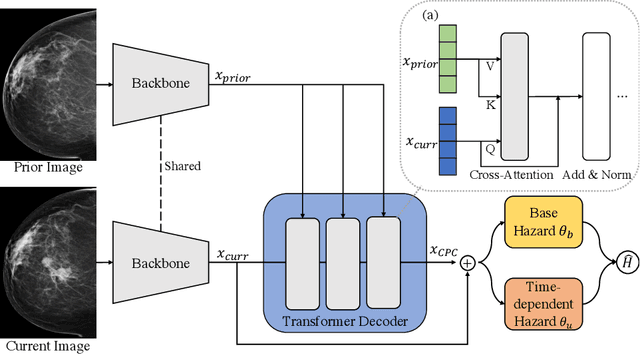
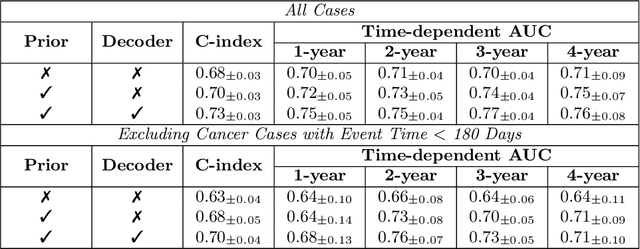


Abstract:Recently, deep learning models have shown the potential to predict breast cancer risk and enable targeted screening strategies, but current models do not consider the change in the breast over time. In this paper, we present a new method, PRIME+, for breast cancer risk prediction that leverages prior mammograms using a transformer decoder, outperforming a state-of-the-art risk prediction method that only uses mammograms from a single time point. We validate our approach on a dataset with 16,113 exams and further demonstrate that it effectively captures patterns of changes from prior mammograms, such as changes in breast density, resulting in improved short-term and long-term breast cancer risk prediction. Experimental results show that our model achieves a statistically significant improvement in performance over the state-of-the-art based model, with a C-index increase from 0.68 to 0.73 (p < 0.05) on held-out test sets.
Improving Perceptual Quality, Intelligibility, and Acoustics on VoIP Platforms
Mar 16, 2023Abstract:In this paper, we present a method for fine-tuning models trained on the Deep Noise Suppression (DNS) 2020 Challenge to improve their performance on Voice over Internet Protocol (VoIP) applications. Our approach involves adapting the DNS 2020 models to the specific acoustic characteristics of VoIP communications, which includes distortion and artifacts caused by compression, transmission, and platform-specific processing. To this end, we propose a multi-task learning framework for VoIP-DNS that jointly optimizes noise suppression and VoIP-specific acoustics for speech enhancement. We evaluate our approach on a diverse VoIP scenarios and show that it outperforms both industry performance and state-of-the-art methods for speech enhancement on VoIP applications. Our results demonstrate the potential of models trained on DNS-2020 to be improved and tailored to different VoIP platforms using VoIP-DNS, whose findings have important applications in areas such as speech recognition, voice assistants, and telecommunication.
Speech Enhancement for Virtual Meetings on Cellular Networks
Feb 16, 2023

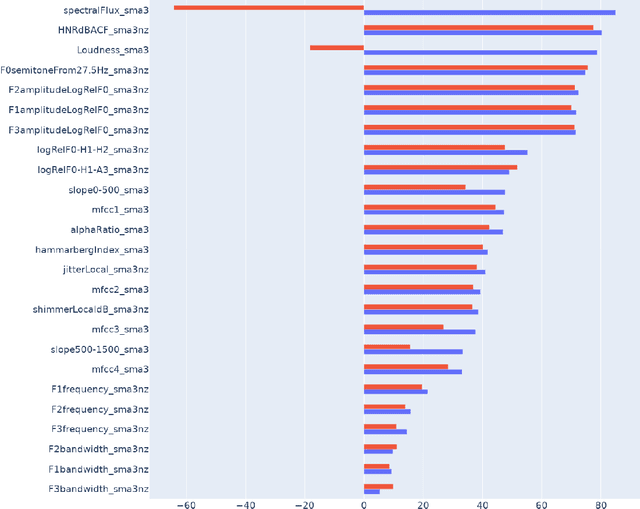
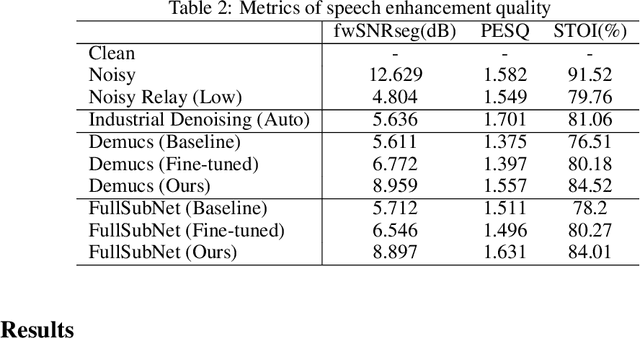
Abstract:We study speech enhancement using deep learning (DL) for virtual meetings on cellular devices, where transmitted speech has background noise and transmission loss that affects speech quality. Since the Deep Noise Suppression (DNS) Challenge dataset does not contain practical disturbance, we collect a transmitted DNS (t-DNS) dataset using Zoom Meetings over T-Mobile network. We select two baseline models: Demucs and FullSubNet. The Demucs is an end-to-end model that takes time-domain inputs and outputs time-domain denoised speech, and the FullSubNet takes time-frequency-domain inputs and outputs the energy ratio of the target speech in the inputs. The goal of this project is to enhance the speech transmitted over the cellular networks using deep learning models.
Embedded System Performance Analysis for Implementing a Portable Drowsiness Detection System for Drivers
Sep 30, 2022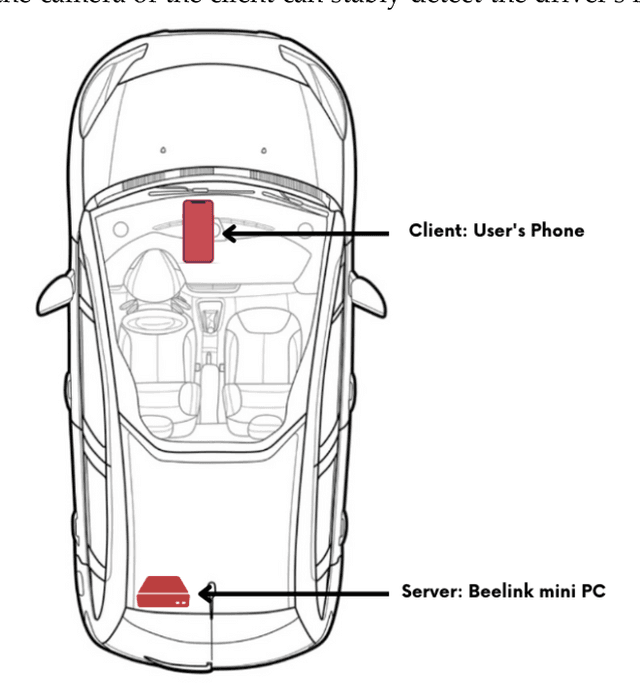

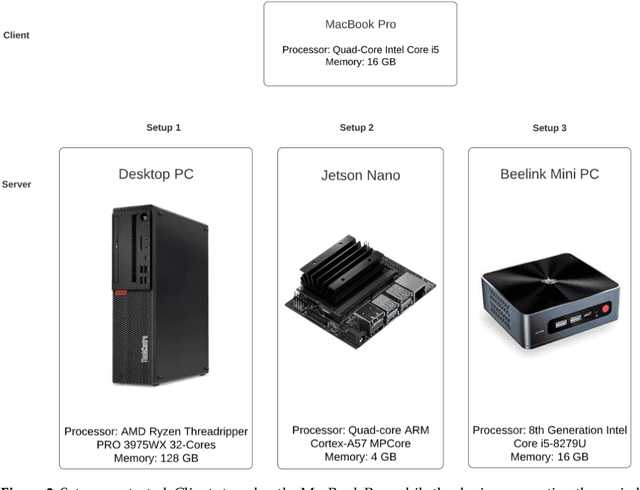
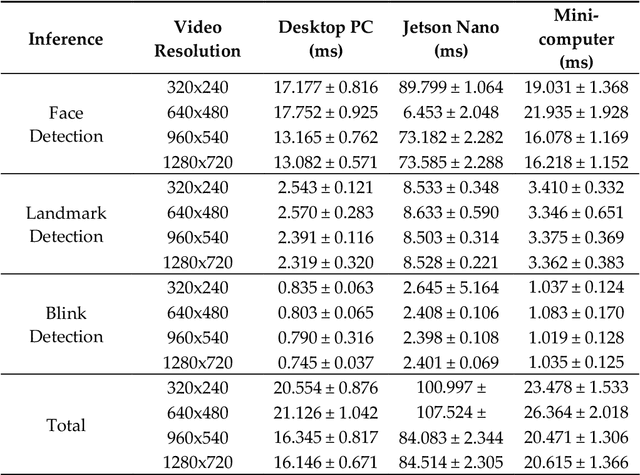
Abstract:Drowsiness on the road is a widespread problem with fatal consequences; thus, a multitude of solutions implementing machine learning techniques have been proposed by researchers. Among existing methods, Ghoddoosian et al.'s drowsiness detection method utilizes temporal blinking patterns to detect early signs of drowsiness. Although the method reported promising results, Ghoddoosian et al.'s algorithm was developed and tested only on a powerful desktop computer, which is not practical to apply in a moving vehicle setting. In this paper, we propose an embedded system that can process Ghoddoosian's drowsiness detection algorithm on a small minicomputer and interact with the user by phone; combined, the devices are powerful enough to run a web server and our drowsiness detection server. We used the AioRTC protocol on GitHub to conduct real-time transmission of video frames from the client to the server and evaluated the communication speed and processing times of the program on various platforms. Based on our results, we found that a Mini PC was most suitable for our proposed system. Furthermore, we proposed an algorithm that considers the importance of sensitivity over specificity, specifically regarding drowsiness detection algorithms. Our algorithm optimizes the threshold to adjust the false positive and false negative rates of the drowsiness detection models. We anticipate our proposed platform can help many researchers to advance their research on drowsiness detection solutions in embedded system settings.
ST-BERT: Cross-modal Language Model Pre-training For End-to-end Spoken Language Understanding
Oct 23, 2020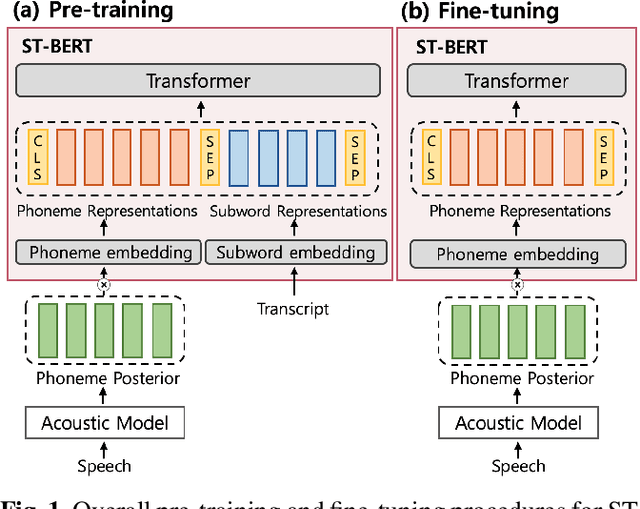
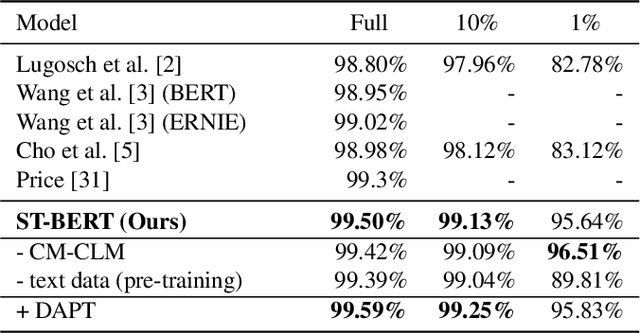
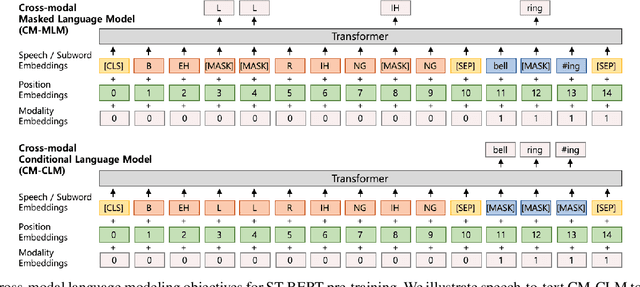
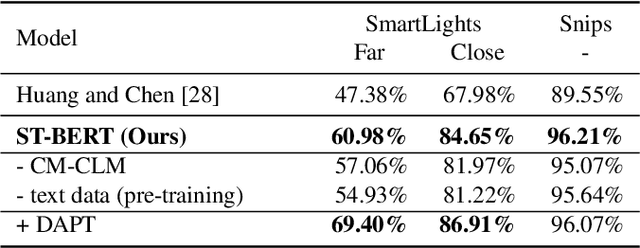
Abstract:Language model pre-training has shown promising results in various downstream tasks. In this context, we introduce a cross-modal pre-trained language model, called Speech-Text BERT (ST-BERT), to tackle end-to-end spoken language understanding (E2E SLU) tasks. Taking phoneme posterior and subword-level text as an input, ST-BERT learns a contextualized cross-modal alignment via our two proposed pre-training tasks: Cross-modal Masked Language Modeling (CM-MLM) and Cross-modal Conditioned Language Modeling (CM-CLM). Experimental results on three benchmarks present that our approach is effective for various SLU datasets and shows a surprisingly marginal performance degradation even when 1% of the training data are available. Also, our method shows further SLU performance gain via domain-adaptive pre-training with domain-specific speech-text pair data.
 Add to Chrome
Add to Chrome Add to Firefox
Add to Firefox Add to Edge
Add to Edge